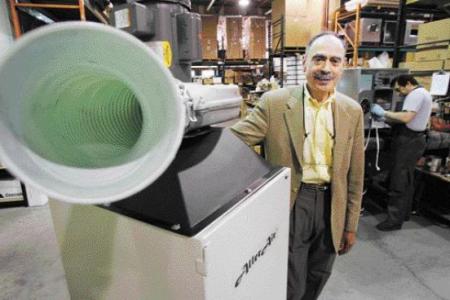MARGIE MASON Wed May 31, 6:05 PM ETJAKARTA, Indonesia (AP) - Indonesia averaged one human bird flu death every 2 1/2 days in May, putting it on pace to soon surpass Vietnam as the world's hardest-hit country.
The latest death, announced Wednesday, was a 15-year-old boy whose preliminary tests were positive for the H5N1 virus. It comes as international health officials express growing frustration that they must fight Indonesia's bureaucracy as well as the disease.
"We're tying to fix this leak in the roof, and there's a storm,"
World Health Organization spokesman Dick Thompson said. "The storm is that the virus is in animals almost everywhere and the lack of effective attention that's being addressed to the problem."
Indonesia, an archipelago of 17,000 islands with a population of 220 million people, has a patchwork of local, regional and national bureaucracies that often send mixed messages. The impression, health officials said, is often that no one is truly at the helm.
"I don't think anyone can understand it unless you come here and see it for yourself," said Steven Bjorge, a WHO epidemiologist in Jakarta. "The amount of decentralization here is breathtaking."
He said Health Ministry officials often meet with outside experts to formulate plans to fight bird flu, but they are rarely implemented.
"Their power only extends to the walls of their office," Bjorge said, adding that the advice must reach nearly 450 districts, where local officials then decide whether to take action.
Indonesia has undergone a sometimes rocky transition to democracy since dictator Suharto was ousted in 1998, with many powers held by the central government being transferred to regional and community control.
But the process has been haphazard, and funding and policy decisions are often at the whim of inexperienced officials, mayors and village heads.
National government officials concede there is a problem.
"The local government has the money, thus the power to decide what to prioritize," said Hariyadi Wibisono, director of communicable disease control at the Ministry of Health. "If some district sees bird flu as not important, then we have a problem."
Indonesia has logged at least 36 human deaths in the past year - 25 since January - and is expected to soon eclipse Vietnam's 42 fatalities. The two countries make up the bulk of the world's 127 total deaths since the virus began spreading in Asian poultry stocks in late 2003.
Attention has been fixed on one village on Sumatra island where six of seven relatives died of bird flu. An eighth family member was buried before samples were collected, but the WHO considers her part of the cluster.
Experts have not been able to make a direct link between the relatives and infected birds, which has led them to suspect limited human-to-human transmission. But no one outside the family of blood relatives - no spouses - has fallen ill and experts say the virus has not mutated.
Scientists believe human-to-human transmission has occurred in a few other smaller family clusters, all involving blood relatives. Experts theorize that may mean some people have a genetic susceptibility to the disease.
On Wednesday, WHO said 54 uninfected relatives and contacts of the Indonesian family cluster are under quarantine and are taking the antiviral drug Tamiflu and being monitored by health workers. The quarantine is voluntary and the teams are also visiting all the homes in the 400-household village in North Sumatra to look for signs of illness. It said there are no signs the disease has spread since May 22.
Bird flu remains hard for people to catch, and most human cases have been traced to contact with infected birds. Experts fear the virus will mutate into a highly contagious form that passes easily among people, possible sparking a pandemic.Experts say the best way to battle bird flu in Indonesia is to tackle it in poultry. But that message is not always getting through. Many local governments have refused to carry out mass poultry slaughters in infected areas, and vaccination has been sporadic at best.
Such measures helped other hard-hit countries like Vietnam and Thailand curb outbreaks. Both have strong central governments that have taken a leading role in the effort.
The UN Food and Agriculture Organization has been working with officials to improve poultry surveillance in Indonesia and quicken response times to outbreaks.
But public awareness and bio-security standards remain low in the densely populated countryside, home to hundreds of millions of backyard chickens.
"It's not quite so easy here, where you have to have the local authorities and provincial authorities and national all on board," said Jeff Mariner, an animal health expert from Tufts University working with the FAO in Jakarta.
"We find outbreaks every week scattered throughout Java. It's a diffusely endemic disease. In most districts, you can find it at any time," he said. "It's a staggering undertaking in a decentralized country."
(
Help protect your family, staff, patients from harmful airborne pathogens, contaminants, pollutants- Avian (bird) Flu, Seasonal (human) Flu, Pandemic Flu, Tuberculosis, SARS, etc.)

